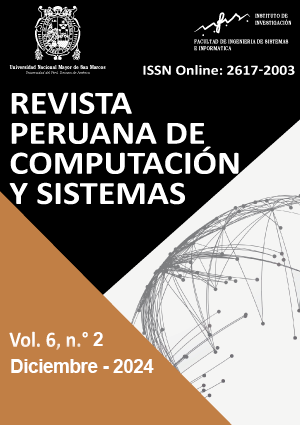Sectrabank Model for Mitigating the Computer fraud in electronic operations through Banking Applications on Android Device
DOI:
https://doi.org/10.15381/rpcs.v6i2.29031Keywords:
Fake App, SIM Swapping, Cybercrime, Computer fraud, Mobile security, AuthenticationAbstract
Cybercrime is a global problem that affects various sectors, particularly the financial sector, where cybercriminals exploit users' lack of security awareness to obtain confidential information through techniques such as phishing, smishing, vishing, and ultimately seizing the OTP code to carry out fraudulent transactions. The objective of this research is to develop the SectraBank model, which incorporates security measures such as the use of the IMEI code, fingerprint authentication, and geolocation to mitigate cyber fraud attacks, specifically in the forms of SIM Swapping and Fake Apps used by cybercriminals to capture the OTP code. To evaluate the effectiveness of the model, simulations of real attacks were conducted on mobile phones of 50 users, divided into control and experimental groups. The results demonstrated that SectraBank mitigated 98% of SIM Swapping attacks and 88% of Fake App attacks. Additionally, 98% of participants expressed their willingness to adopt the model. These results are crucial for the banking sector, as the proposed model offers a robust security strategy that could significantly reduce cyber fraud, enhancing both security and trust in mobile banking applications.
Downloads
Published
Issue
Section
License
Copyright (c) 2024 Jhon Melendez, Luis Rivera, Jorge Mayhuasca, José Herrera, Paulo Calderón, Yordy Benites

This work is licensed under a Creative Commons Attribution 4.0 International License.
THE AUTHORS RETAIN THEIR RIGHTS:
(a) The authors retain their trademark and patent rights, and also over any process or procedure described in the article.
(b) The authors retain the right to share, copy, distribute, execute and publicly communicate the article published in the Revista Peruana de Computación y Sistemas (for example, place it in an institutional repository or publish it in a book), with acknowledgment of its initial publication in Revista Peruana de Computación y Sistemas.
(c) Authors retain the right to make a subsequent publication of their work, to use the article or any part of it (for example: a compilation of their work, lecture notes, thesis, or for a book), provided that they indicate the source. of publication (authors of the work, magazine, volume, number and date).



